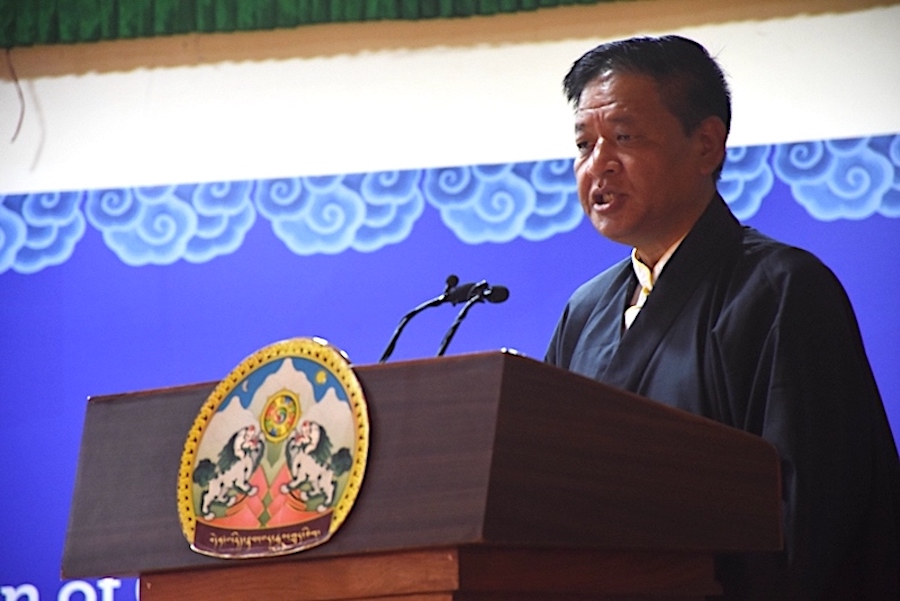
The sacred work is painstakingly created with millions of grains of sand, only to be dismantled and dispersed on the closing day to symbolize the impermanence of all that exists.
Ten to 12 monks will take part in the creation of the mandala in the Museum’s Eighth Avenue Lobby.
Visitors will also witness the music and renowned chanting of the monks during the opening and closing ceremonies. This is the monks’ first appearance at the Museum in more than five years. The event is free and open to the public. The schedule for the week is as follows:
Opening ceremony: 2:30 p.m. Sunday
Work-in-progress: 10 a.m.-4 p.m. Monday-Friday. Although the Museum is normally closed Mondays, this week the Museum’s Eighth Avenue Lobby will be open for viewing the work.
Closing Ceremony: 2:30 p.m. May 10
The construction process consists of six parts: opening ceremony, drawing the lines, mandala construction, mandala completion, dismantling the mandala and dispersal of the sand.
During this extensive process, visitors will also experience several activities unique to Tibetan culture.
These activities include traditional temple music and the overtone chant of the monks, producing several tones at once, creating harmony within just one voice.
From all the artistic traditions of Tantric Buddhism, that of painting with colored sands ranks as one of the most exquisite.Throughout the mandala creation, the monks pour millions of grains of colored sand from traditional metal funnels called chakpur.
The finished mandala is about five feet by five feet, and requires three to five days of work.
The monks conclude their creation with a consecration ceremony, where the mandala is destroyed and the sands are carried to a nearby, flowing body of water, where they are poured to disperse the healing energies of the mandala throughout the world.
The subject of a Tibetan sand painting is known in Sanskrit as a mandala or cosmogram, of which there are several types.
All mandalas have outer, inner and secret meanings. On the outer level they represent the world in its divine form. On the inner level they represent a map by which the ordinary human mind is transformed into an enlightened mind. And on the secret level, they depict the perfect balance of the energies of the body and the clear light dimensions of the mind.
The creation of the sand painting is said to effect purification and healing on these three levels.
Visitors to the BMA can also view the exhibition “Desire and Devotion: Art from India, Nepal and Tibet,” from the John and Berthe Ford Collection, featuring 150 paintings, sculptures, and ritual objects, primarily from the Hindu and Buddhist traditions of India, Tibet and Nepal.
It is on view through May 25, and admission is free.
For more, see the Web site at www.artsbma.org.









